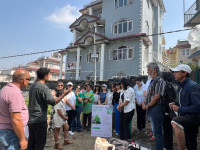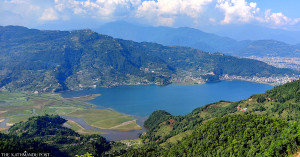Valley
Dangerous mercury level found in Nepali women of childbearing age
Nearly 40 percent of women of reproductive age, including those in Nepal, have elevated levels of mercury, a toxic metal, in their body, according to a study.
Nearly 40 percent of women of reproductive age, including those in Nepal, have elevated levels of mercury, a toxic metal, in their body, according to a study.
The report ‘Mercury in Women of Childbearing Age in 25 Countries’, released on Monday, has revealed that mercury, a highly toxic metal, has been found in high levels across all global regions.
The study has shown that women of childbearing age in the Pacific Islands and in communities near gold mining sites in Indonesia, Kenya, and Myanmar as well as in Nepal were found to have average mercury levels many times higher than the US Environmental Protection Agency (EPA) health advisory levels that can cause neurological and organ damage.
The study, jointly conducted by the International POPs Elimination Network (IPEN) and Biodiversity Research Institute (BRI) to measure the prevalence of mercury in human body at different levels, has found 36 percent of the women sampled had average mercury levels over the US EPA health advisory level of 1 ppm, which can cause brain damage, IQ loss, and kidney and cardiovascular damage.
“Fifty-three percent of the women of reproductive age are found to have more
than 0.58 ppm of mercury, a level that can cause fatal neurological damage, among other harmful effects,” shows the study that was carried out by collecting hair samples from 1,044 women of reproductive age from 37 different locations across 25 countries in six continents.
In Nepal, where the study was conducted in two locations–gold plating workers in Kathmandu Valley and fisher folk around Begnas Lake in Kaski–mercury contamination was found to be between 0.36ppm to 1.72 ppm.
The mercury contamination was recorded higher than 1ppm among 75 percent of samples involved in gold plating business in Lalitpur, according to the Center for Public Health and Environmental Development (Cephed), IPEN’s research partner in Nepal.
Similarly, the contamination level was found above 1ppm among 9 percent of women from the fishing community. The maximum mercury level recorded among these women was 1.18ppm. However, the average mercury level among Jallari and metal plating women were 0.67ppm and 3.62ppm respectively.
Speaking at a press conference in the Capital on Monday, Cephed Executive Director and environmental scientist Ram Charitra Sah said that elevated levels of mercury found among women from the fishing community was because of regular consumption of fish from the lake with high mercury contamination. Likewise, women involved in plating business were exposed to mercury as they do not use any safety gears.
“Thousands of women and children in metal plating industry are condemned to a future where mercury impairs the health of adults and damages the developing brains of their offspring,” said Sah.
Released a week ahead of the inaugural Conference of Parties (COP) to Minamata Convention on Mercury in Geneva, Switzerland, the report is expected to attract global attention towards the increasing mercury hazard.
The convention seeks ban on new mercury mines, closure of existing ones and cutting down mercury use in products and processes, and adapting controlling measures for its emission in environment, among other provisions.
Nepal has signed the convention on October 10, 2013 in Japan. However, it has not yet ratified the convention, which came into force on August 16, 2017. Of the total 128 signatories, 74 countries have ratified the convention, making it an internationally binding treaty. Ratifying the convention can provide Nepal, which has been facing mercury related hazard, with financial and technical support to fight the mercury menace.
A Nepali delegation, comprising officials from the Ministry of Population and Environment (MoPE), is participating in the COP meeting.
“Nepal needs to ratify the convention at the earliest so that it can benefit from international assistance for combating mercury problems,” said Sah.




 28.31°C Kathmandu
28.31°C Kathmandu










